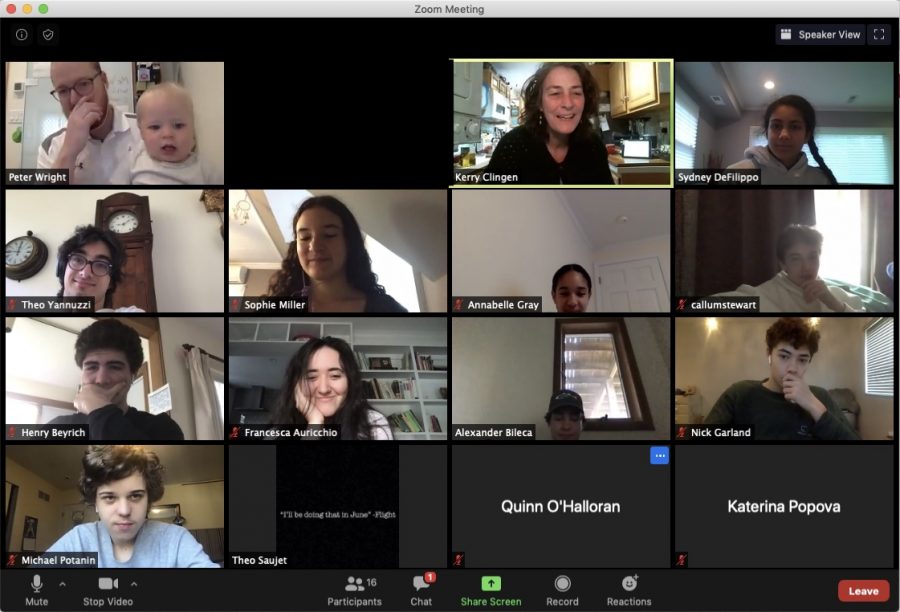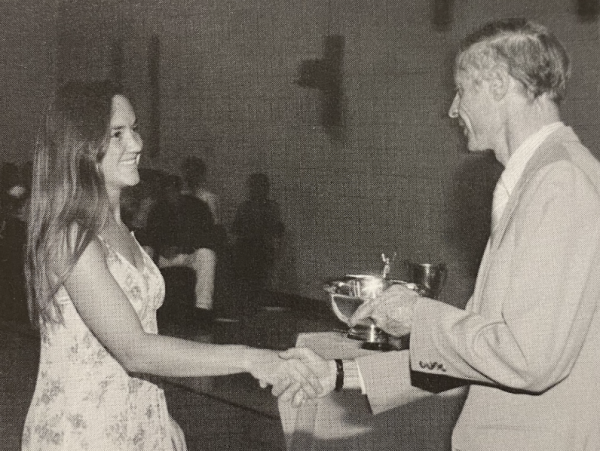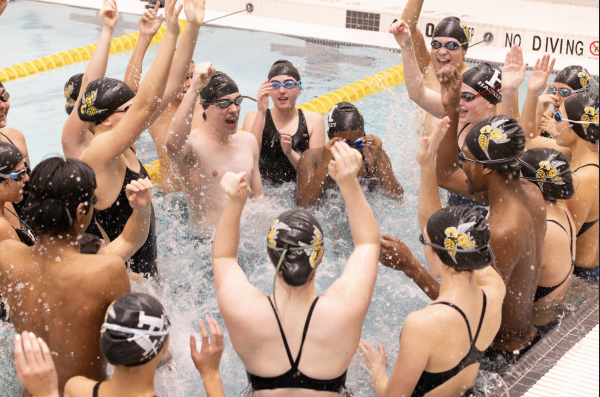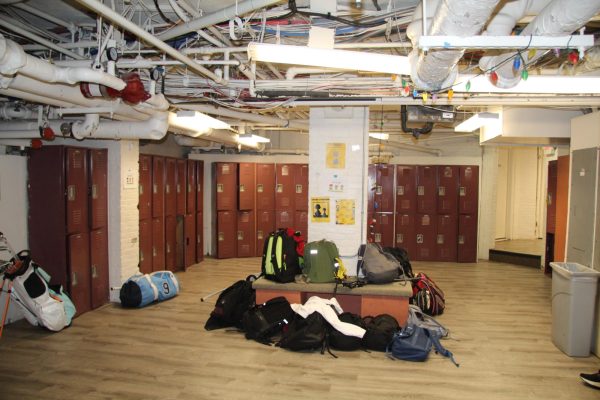Juggling Two Jobs at Once: Teaching and Parenting
Mr. Wright shows his joint homeroom with Ms. Clingen his son, Ellis. Many students have had the chance to see their teachers’ children with online school.
With the implementation of online classes, many Hackley students have been going through an adjustment period as they accustom themselves to their new schedules and class formats. The same goes for teachers as they must learn how to appropriately teach their classes over zoom both synchronously and asynchronously. For teachers with younger children, working from home has made it especially difficult to juggle teaching and parenting.
According to Education Week, more than 124,000 public and private schools are closing across the U.S. as of April 14th, leaving many quarantined parents without childcare. Although many older kids can be independent as most colleges and high schools offer online classes and schoolwork\; younger children need significantly more attention and care from their parents. These children need their parents to help them access zoom and other online resources to get their work done in addition to parental supervision and guidance.
For parents who have to deal with both these parenting struggles and the demands of a full-time job, the stress can often become too much. Marissa Young, Associate Professor, Department of Sociology and Canadian Research Chair in Mental Health and Work-Life Transitions of “the conversation” predicts that parents will eventually reach a breaking point when the chronic stress overwhelms them, stating that “parents will endure more than what might be psychologically manageable given their levels of work-family conflict during this crisis.” This will become problematic for many families across the U.S. as they continue to deal with quarantine.
This issue is also prevalent on the Hilltop, as many teachers are simultaneously working and raising young children. Physics teacher and running coach Seth Karpinski and his wife are raising their 7-month-old daughter, Maddy. Due to the fact that his wife is a healthcare worker, it becomes difficult to equally balance who is taking care of Maddy. There are days when his wife has to go into work and he is alone with Maddy all day, making it impossible to teach forty-five-minute lectures for most of his classes. With only two classes a week, planning a lecture in a time where Maddy could need attention is “not a risk you can really take,” according to Mr. Karpinski.
This forces Mr. Karpinski to provide his students with more asynchronous material, while using class time as a place to touch base, giving them time to ask any questions they have. This is mainly due to the fact that he goes “into every class thinking there is a chance [he] can’t teach this class 5 or 15 minutes in,” so he tries to keep his classes more informal. Although he remarks on the benefits of spending more time with his family, it is also clear that raising a 7-month-old baby is also a full-time job, which constitutes constant attention and care.
Caring for children older than infants while also trying to work from home also bears its own challenges. English teacher and running coach Brigid Moriarty, who has both a 2-year-old son and a 6-year-old daughter, has been dealing with the effects of working from home. She and her husband are both now stay at home parents with full-time jobs further complicating their lives. They have been splitting their time between the grandparents’ houses, where they are able to lean on their children’s grandparents for child care. Ms. Moriarty remarks that she and her husband “cannot both work, facilitate [their] daughter’s distance learning, and take care of [their] son without the help of their grandparents.” Now that they are working from home, her husband is able to spend a lot more time with their children then his job would normally allow him to do\; however, this comes with its own challenges.
Ms. Moriarty’s six-year-old daughter is in kindergarten at Hackley, as is college counselor Rebecca Hall’s five-year-old daughter, Aria. Although the lower school teachers or “superheroes,” as Ms. Moriarty calls them, have been doing a phenomenal job, young kids can only be so independent. Ms. Hall, reflecting upon this said that “in terms of getting her work done, she [Aria] needs a lot of hand-holding.”
Ms. Moriarty can not always have full zoom meetings for her classes, given that her workday rarely goes uninterrupted. Akshi Khowala, a freshman who has Ms. Moriarty as an English teacher noted that when her son ran into the zoom meeting the entire class was “just trying not to laugh.” Many students find humor in the situation, and Ms. Moriarty acknowledges the fact that both her students and her colleagues “enjoy seeing them [her kids] appear every now and then.”
Looking forward, it will continue to be challenging for teachers to juggle both parenting and teaching, but both teachers and students are learning about what it means to be flexible.












![Although the affect of COVID-19 has been on a decline with less cases and deaths allowing most of us to remain mask free, people on the Hilltop are still choosing to mask up. Personal health concerns as well as helping an elderly neighbor are reasons as to why middle school science teacher Emma Olsen still wears a mask years after the COVID-19 pandemic began. Since I am helping take care of him, you know I go over to work with his dogs, that kind of thing; I dont want to bring [the virus] home to him, Ms. Olsen said.](https://hsdial.org/wp-content/uploads/2024/03/IMG_1713-450x600.jpg)
